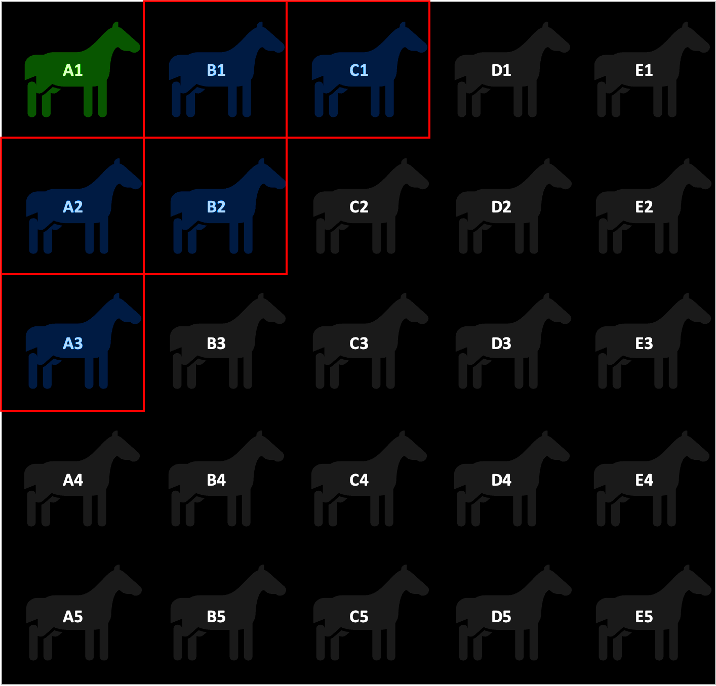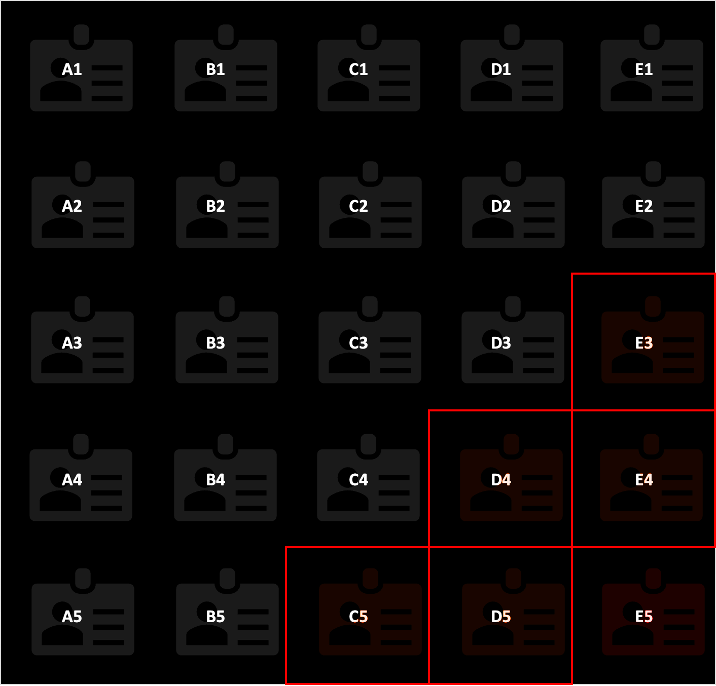A rather popular logic puzzle is the – Find the fastest 3 horses – and it goes something like this. You have 25 horses, and you can only race five horses at a time. What is the minimum number of races you need to find the fastest 3 horses?
First, we need to divide the 25 horses into 5 groups of 5 horses each. Then, we can race each group on one of the 5 tracks and record the order of finish. Let’s name the horses using their group and rank, such as A1 for the fastest horse in group A, and E5 for the slowest horse in group E.
Next, we can race the winners of each group (A1, B1, C1, D1, E1) on one track to find the overall fastest horse. Let’s say A1 wins this race, followed by B1, C1, D1 and E1. This means A1 is the fastest horse out of all 25.
Now, to find the second and third fastest horses, we need to consider only a few candidates: B1 and A2 (the second fastest horses in their groups), and C1, B2 and A3 (the third fastest horses in their groups). We can race these 5 horses on one track and take the first and second place as the second and third fastest horses overall.
Therefore, we can find the fastest 3 horses out of 25 using only 7 races: 5 races for the initial groups, 1 race for the group winners, and 1 race for the remaining candidates.
A lesson from this puzzle is that sometimes we need to look beyond the obvious and think creatively to solve a problem. The puzzle challenges us to find a way to minimize the number of races while maximizing the information we get from each race. It also teaches us that we should not ignore the potential of the runners-up, as they may still be faster than some of the winners.
So, with this puzzle fresh in memory… lets apply similar logic on a fictive organization that has 25 employees and needs to identify the 3 least value generating employees. The business is not good, and the fictive company needs to enforce layoffs due to budget costs and aims to identify the 3 worst performers to let go from the company. How would you go about this problem?
One possible solution is to divide the 25 employees into 5 teams of 5 employees and assign them a project. Then, evaluate the performance of each team and select the worst employee from each team. Then, give these 5 employees a more challenging project and evaluate them again. The worst employee in this project is the worst employee overall. To find the second and third worst employees, you need to compare the second and third worsted place employees from the first team, the second worsted place employee from the second team, and the third-place employee from the third team. The worst and second worst employees in this comparison are the second and third worst employees overall.
This solution is similar to the puzzle, but it also takes into account other factors such as skills, teamwork, and project difficulty. It also assumes that performance can be measured objectively and consistently, which may not be true in reality.
In the horse puzzle, we are assuming that the horses have fixed and inherent speed that does not change over time or depend on other factors. In other words, you are treating them as objects that can be ranked and sorted without any other concerns. However, in the employee scenario, we are dealing with human beings who have feelings, emotions, aspirations, and we naturally can relate to the other parameters that can make the difference. Moreover, human performance may vary over time or depend on other factors such as motivation, feedback, training, etc. Therefore, you cannot assume that they have fixed and inherent value that can be measured and compared without any ethical concerns.
The employee scenario illustrates the ethical dilemma that arises when we try to apply logic and rationality to human situations that involve moral values and judgments. While logic and rationality are useful tools for solving problems and making decisions, they are not sufficient or appropriate for dealing with complex human issues that require empathy, compassion, and respect. We need to be aware of the limitations and implications of our logical thinking and problem-solving skills, and not use them blindly or indiscriminately.
There are many parameters that makes out the effectiveness of an employee and some employees make other employees more effective. Maybe it would be fairer to also include the costs of the employee net value calculation by subtracting the operating costs (salary). Human bias may also favor employees visible in the office and make an unfair judgement towards hybrid workers as well as extroversion vs introversion personalities. Imagine applying this logic in an organization with 25000 employees to find the 3000 least value employees.
In conclusion, the fastest horses puzzle is a fun and challenging exercise that tests our logical thinking and problem-solving skills. However, it also reveals the ethical dilemma that arises when we try to apply logic and rationality to human situations that involve moral values and judgments. We need to be careful and mindful of how we use our logic and rationality, and not forget our humanity and morality.
Humans are complex… would the futuristic AI Overlords have similar ethical issues to humans as we humans do with horses?

